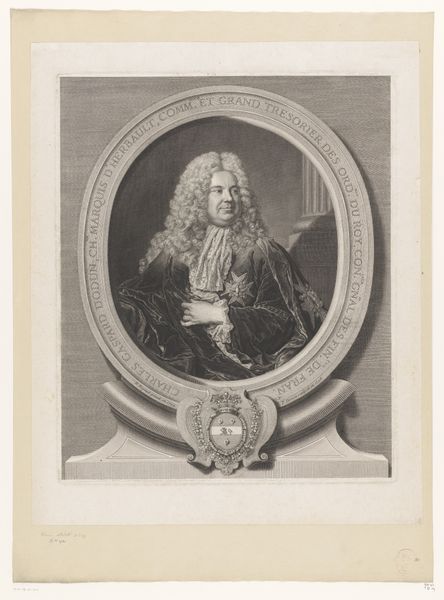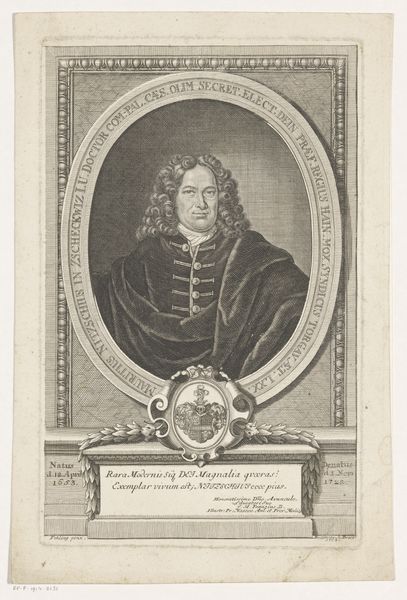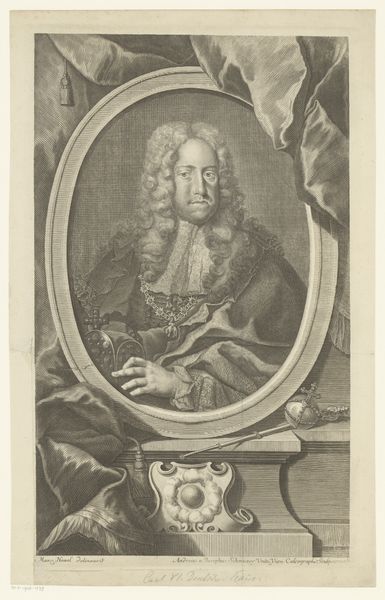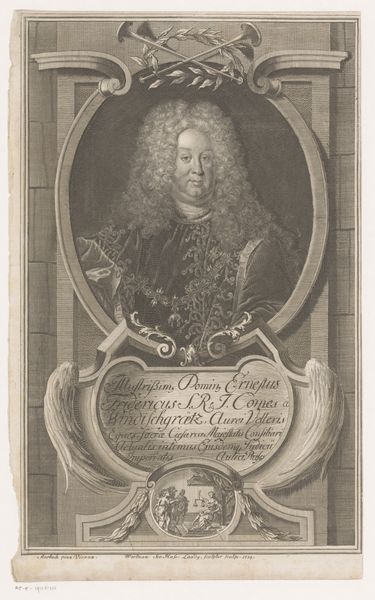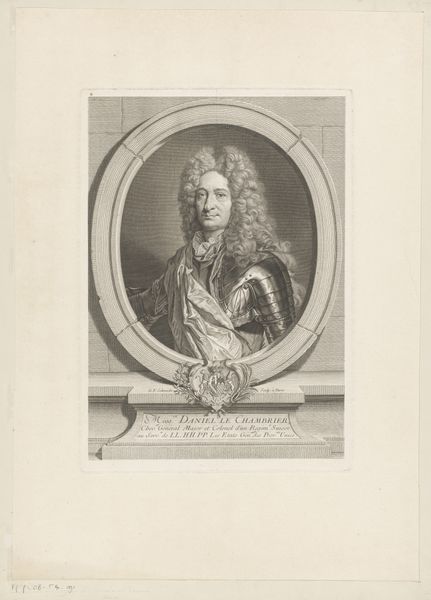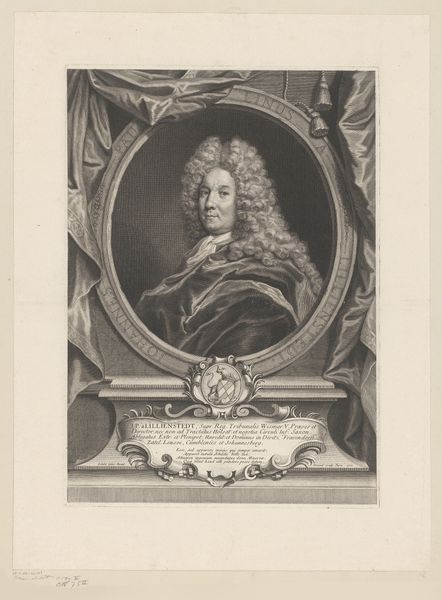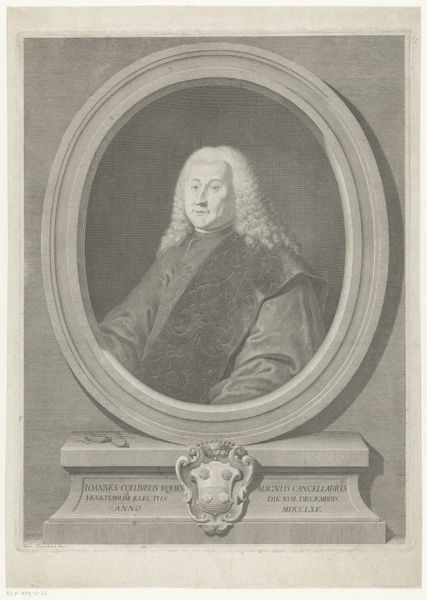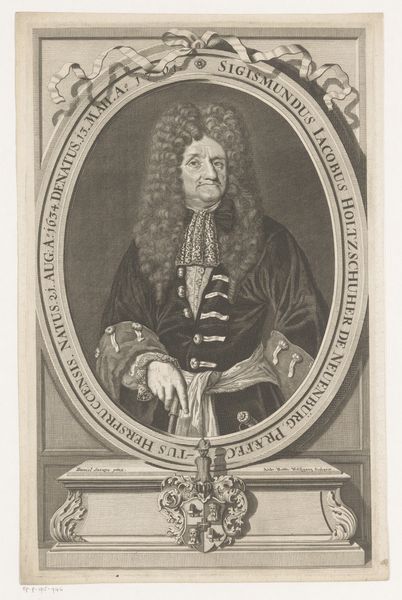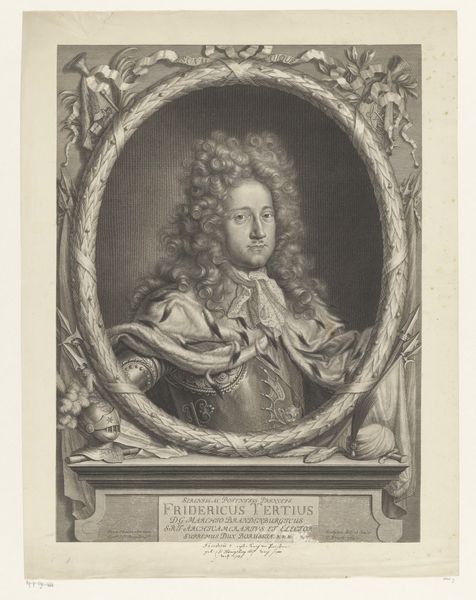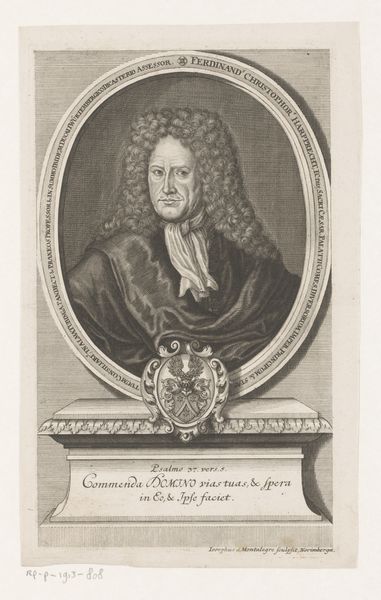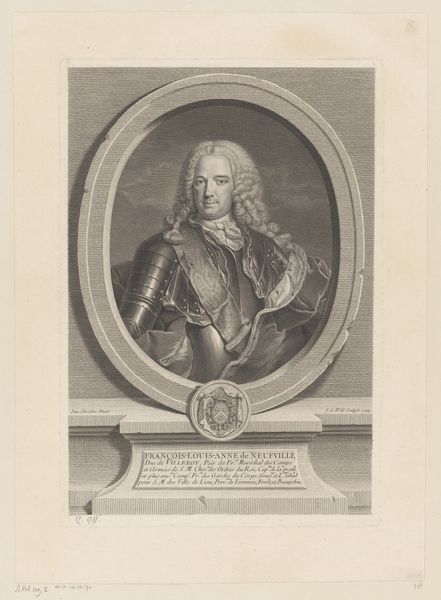
print, engraving
#
portrait
#
baroque
# print
#
pencil drawing
#
line
#
history-painting
#
engraving
#
realism
Dimensions: height 443 mm, width 319 mm
Copyright: Rijks Museum: Open Domain
Curator: This is "Portret van Tommaso Querini," an engraving dating back to 1760. The artist is Giovanni Marco Pitteri. Editor: Immediately, the sheer density of the linework strikes me, almost mimicking the tactile quality of woven cloth. The subject practically emerges from a sea of incredibly fine lines. Curator: Precisely! Note the contrast between the detailed rendering of Querini’s face and wig, achieved through meticulously placed hatching and cross-hatching, against the smoother areas defining the frame around him. It uses the interplay between light and shadow, form and texture, to establish a complex semiotic exchange. Editor: Indeed. Considering the social standing implied by Querini's attire and the inscription – "Ex Merito" suggesting accomplishment through merit – I am curious about the workshop setting and division of labor behind such a detailed print. What kind of collaborative effort was needed to create such intricate line work and convey that prestige? How does printmaking like this blur the boundaries between artisanal craft and high art? Curator: That is a most intriguing interpretation. Let’s think about how Pitteri masterfully utilized line to sculpt Querini’s likeness. Each line carries information, defining the subject’s physiognomy, social rank, and, dare I say, even his inner character. Note, particularly, the strategic use of varied line thickness in framing his face and wig, creating a powerful illusion of depth. Editor: Yet, it begs the question – what stories do the materials tell? The copperplate itself, the inks used, and even the paper bear witness to the socioeconomic currents of the time. This print, as an object, moved through markets, perhaps shaping public perceptions of Querini and reinforcing hierarchies of power. The way these kinds of prints circulated tells us so much about visual culture. Curator: Undoubtedly. And speaking to the enduring quality of visual language: observe how Pitteri subtly utilizes the surrounding cartouche and emblems, functioning almost like a personal brand that enhances Querini’s presence within the visual composition, embedding meaning and establishing his rank for viewers across centuries. The realism gives it power! Editor: Fascinating, and a reminder that such portraiture also speaks to the democratization of imagery in the 18th century. More than painting perhaps, prints allowed for a wider circulation of important persons to new viewing publics. That’s real influence being shaped through the means of production. Curator: Absolutely. Looking at it, I see how the artist's precise artistry turns into an artifact that encapsulates 18th century aesthetics of realism. Editor: Indeed, it prompts us to think not only about the ‘who’ but the ‘how’ – how images like this were made, distributed, and consumed. The story of labour behind this engraving.
Comments
No comments
Be the first to comment and join the conversation on the ultimate creative platform.
